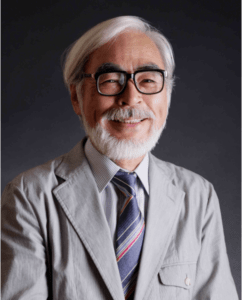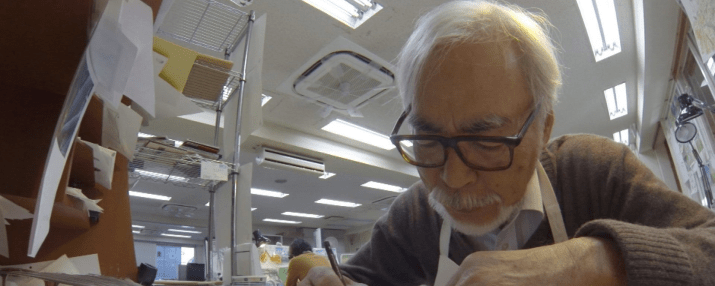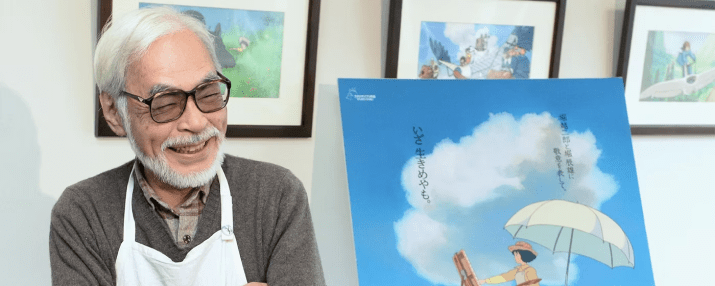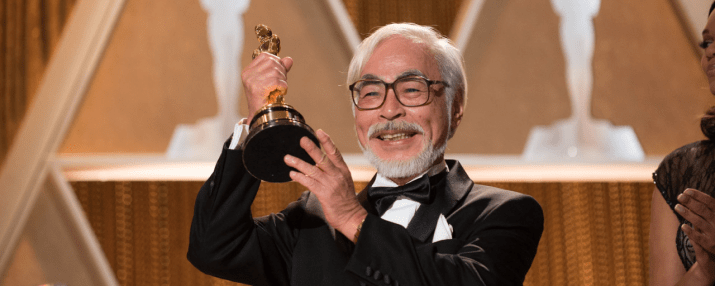Be inspired with Hayao Miyazaki’s journey to becoming the iconic director that he is today.

Hayao Miyazaki, born on January 5, 1941, is a name synonymous with Japanese cinema. He directed 11 films and worked on various projects, leaving a lasting impact on animation as Studio Ghibli’s backbone.
Is there anyone in Japan who hasn’t seen a Hayao Miyazaki’s film? Despite his monumental success as a director, his career was far from smooth sailing.
Late Bloomer in Directing
Miyazaki’s foray into directing came late. He debuted at 38, a significant delay compared to his peers. During his youth, he aspired to be a manga artist, showcasing exceptional drawing skills.
Despite continuous rejections and no manga club in college, he persisted in his passion, ultimately transitioning to animation. He started at Toei Animation in 1963, meeting Isao Takahata from Studio Ghibli and Yasuo Otsuka from Lupin III.
Early Career and Struggles

Hayao Miyazaki’s early career involved significant contributions to popular series like “Lupin III” and “Heidi, Girl of the Alps”. His first animated directive work, “Future Boy Conan,” had modest viewership but earned critical acclaim and retrospective recognition.
Breakthrough and Setbacks

The turning point came with the offer to direct a film in the “Lupin III” series. At 38, Miyazaki’s debut film, “The Castle of Cagliostro,” transformed Lupin III into a “gentle thief.” Despite its unique vision, it initially flopped due to competing sci-fi anime like “Space Battleship Yamato.”
Rise to Prominence
Despite initial skepticism, the film, released when Miyazaki was 43, was a moderate hit, establishing his reputation as a filmmaker. Consequently, “The Castle of Cagliostro” played a crucial role in Hayao Miyazaki’s rise to prominence, reshaping perceptions of Lupin III and contributing to his enduring legacy in the film industry.
Challenging Years
Miyazaki faced a challenging period after consecutive failures, with few offers for directive roles. It was his encounter with Toshio Suzuki, then deputy editor of Animage, that marked a turning point. Suzuki, impressed with Miyazaki’s talent, played a key role in bringing his ideas to life.
Studio Ghibli and Beyond

The creation of “Nausicaä of the Valley of the Wind” marked Miyazaki’s return to the spotlight. Despite doubts, the film released when Miyazaki was 43 became a modest hit, restoring his reputation as a filmmaker.
To conclude, Hayao Miyazaki’s resilient and creative journey paved the way for Studio Ghibli and a string of successful films. His inspiring story, marked by both challenges and triumphs, highlights the collective efforts that underpin Studio Ghibli’s enduring success. Ultimately, it serves as a testament to the power of perseverance and collaboration.
check out AnimeInJapan‘s review and Ranking of Hayao Miyazaki’s Greatest Works.
0 Reviews






